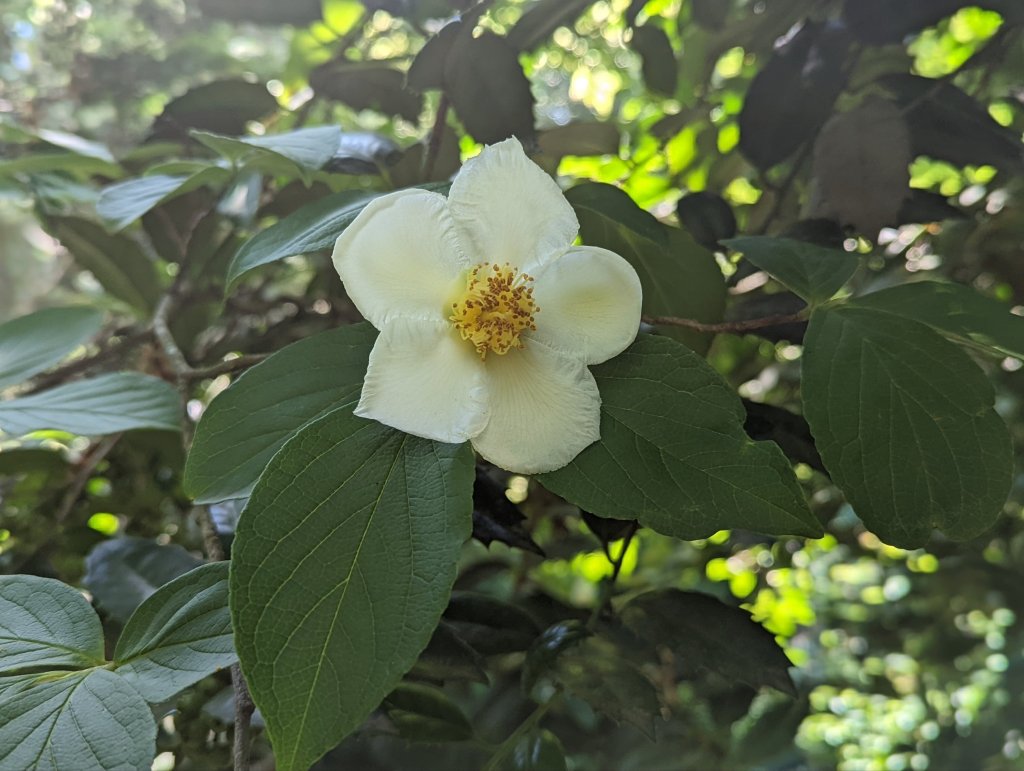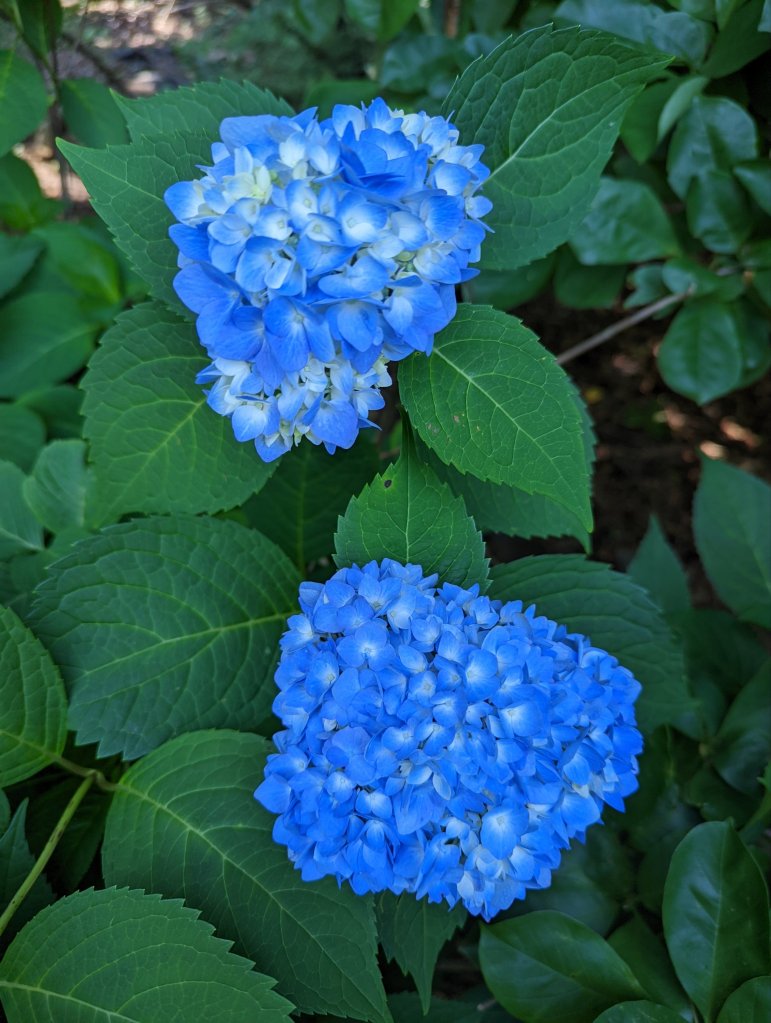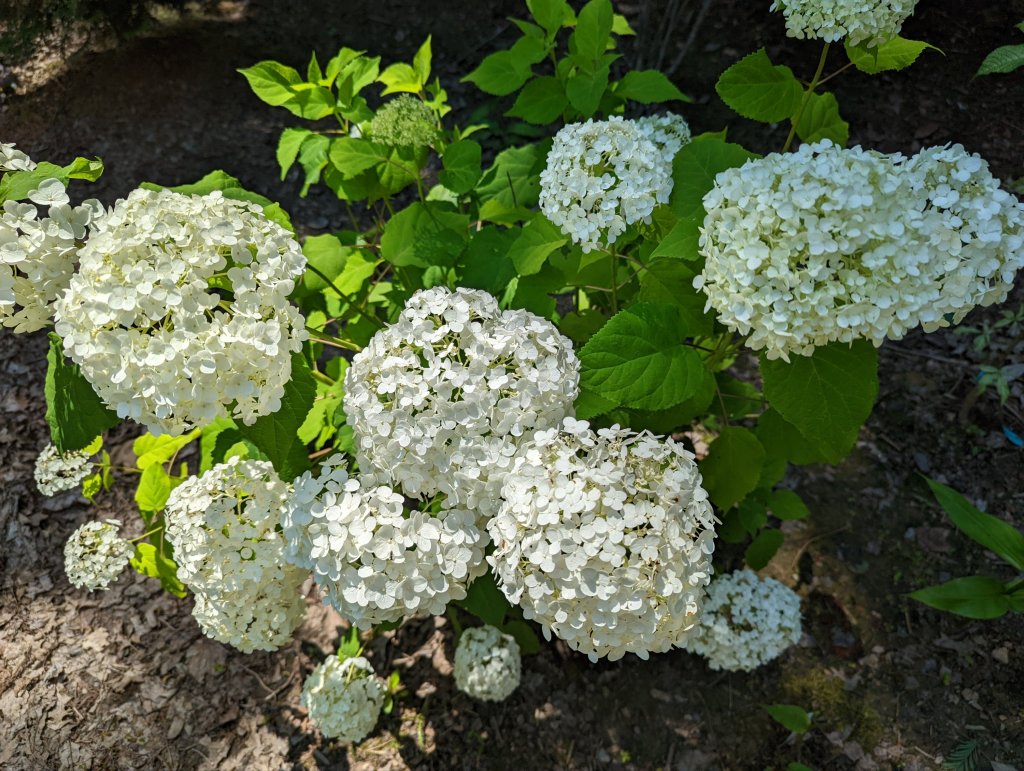No matter how I resist, I curse rabbits that inflict increasing damage upon new plantings in the garden. My inattention to caring for tender newcomers is a challenge, but a newly planted sweetfern (Comptonia peregrina) has been nibbled in half, twice, with the damaged stem left behind. I understand damage by hungry wildlife, but this seems senseless.
I am now fully convinced that due to dual threats, my inattention to nurturing, and rabbits, I must pot up tiny newcomers to grow to a more substantial size, or plant larger sizes from the start. While deer have been an issue for decades, though one easily managed, rabbits are an increasing presence, and one not so easily addressed.
As always, I must adjust. If larger plants are the answer, this is not most convenient, but it can be done.

In recent years I’ve noticed large lumps on leaves of the vernal witch hazel (Hamamelis vernalis, above). It seems no harm comes of it, but a bit of research reveals that the curious galls are created by aphids. There seem fewer this year, but nothing will be done to prevent more and aphids have not been much of a problem. I’ve noticed a few Japanese beetles on the dark leafed crape myrtles, but only a few and while the small numbers are most often seen on the patch of Ostrich ferns in part sun, none have been seen this summer.
I am too much a skeptic to believe the garden has reached a permanent balance where beneficial wildlife controls the abundance of damaging creatures, and of course I do not hope that coyotes move in to control the bunnies. But, after repeated defoliations due to caterpillars and invasions of beetles and aphids I have no complaint with the current balance.

So, on to more pleasant discussion, the stewartia (Stewartia pseudocamellia, above) continues to flower on more shaded branches, of which there are many with a number hanging low enough that we can enjoy the display. The fallen flowers are quite slick on the stone path below, but a month of careful footing is a small cost for this splendid and prolonged show.


The hydrangeas have recovered nicely from winter damage that required considerable pruning of dead stems. Long ago, I conceded that only reblooming, remontant mopheads (Hydrangea macrophylla, above) should be planted, though a few that flower sparsely remain. Lacecap and mountain hydrangeas (Hydrangea serrata, below) are much sturdier in resisting winter injury, and these are a highlight of the garden in late June.

Again, the Oakleaf hydrangeas (Hydrangea quercifolia, below) are glorious, not a surprise since they are very dependable, but I am pleased there are more flowers on ones that are shaded. The shaded Oakleafs are grown more for foliage than flowers, so this is a bonus.

A year ago, ‘Annabelle’ hydrangea (Hydrangea arborescent ‘Annabelle’, below) was chewed nearly to the ground by deer, though thoughtfully one flowering stem was left. Lesson learned, as so few are, the repellent has allowed full growth and flowering this summer. Yesterday, numerous smooth hydrangeas flowering along a nearby mountain trail clearly showed the larger flower and sturdier stems of ‘Annabelle’.

Two magnolias, a rooted stem of ‘Royal Star’ potted two years ago, and a seedling of a native Cucumber magnolia are now ready for planting. I didn’t shop these much, but found no takers for the giveaways, so they’ll be planted in the garden somewhere, if I can find a spot with a bit of sunlight. Of course, both are large enough that rabbits should not be a threat.
I found your comments about rabbits especially appropriate, as this year has been a banner year for rabbit destruction of our garden. Several lilies have now been totally eaten. For the last 50 years here in Nashua, NH, we had no rabbit problem, due to no rabbits. But some group decided rabbits were a good thing, so imported a bunch, which then reproduced… like rabbits! Now you see them everywhere, and every day. They’re definitely cute, and definitely destructive to our gardens!
Today, yellow rockets of Ligularia ‘The Rocket’ sit beneath its remaining foliage, the latest victim of our rabbit invasion. The situation is serious, so I decided against rabbit jokes in my post, except for the very cute title.
The worst rabbit in my garden was an old Volkswagen parked in the driveway. I am glad that was the worst of it. I do not know what the little rabbits here eat, but it is not in the landscapes.
An old tractor broke down at the edge of the garden years ago. I figure it will rust away some year, or perhaps I’ll decorate it as a planter. Planting in old wheelbarrows and such seems to be a thing.
You said that deer were easily managed. They have become voracious eaters of absolutely everything this year in both my and my neighbor’s yards. We sprayed as usual, me with Bobbex and her with Deer Out. Everything not netted/fenced is deer resistant and historically left alone after June nibbling. In 16 years deer had not touched lantana, rudbeckia, canna, ice plants, etc. but now everything seems fair game. Any suggestions?
I spray with Bobbex, but every other month I add a small amount of a red pepper sauce that is made to deter squirrels from eating bird seed. This is worth a try to vary the taste and smell of the repellent. I do caution to try to spray down wind with the pepper enhanced Bobbex. I don’t think about it until my throat’s burning, but it doesn’t last long.